Inventions
Dog Dryer
Available at thedogdryer.com.There needs to be a human version of this.


Posted By: Alex - Thu Aug 29, 2019 -
Comments (4)
Category: Inventions, Pets, Dogs
The GE Blue Max Radio
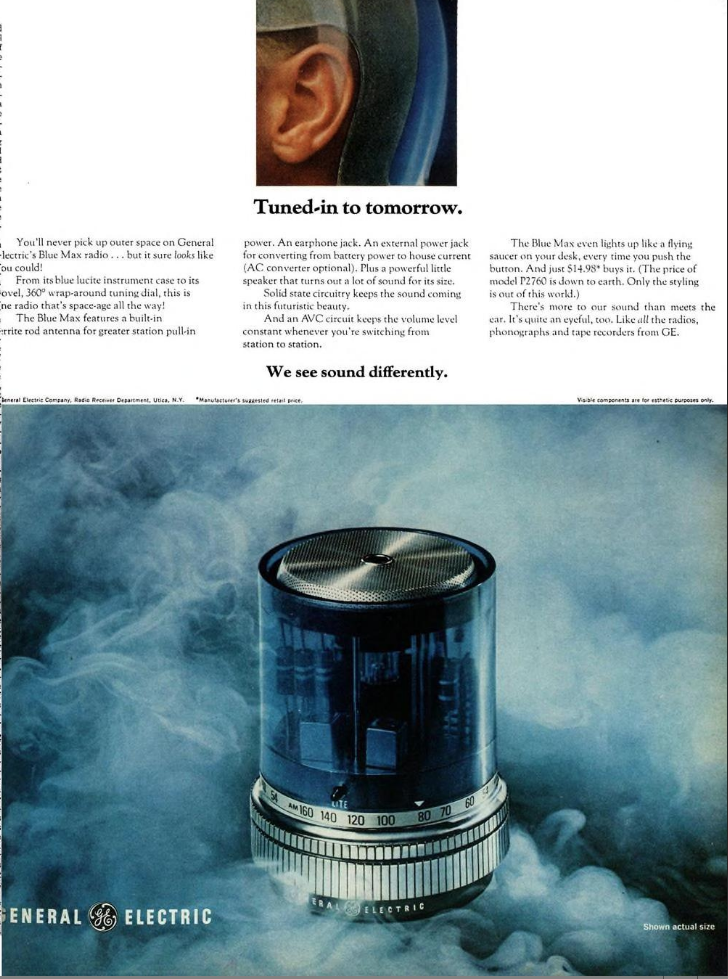
Posted By: Paul - Thu Aug 01, 2019 -
Comments (3)
Category: Design and Designers, Inventions, Technology, 1960s
Shoo: The Deterrer of Pooping Dogs
Thirteen-year-old Noah De La Paz of California has invented a device to stop dogs from pooping on the lawn of his family’s house. It uses a camera and image-detection software. When a dog is identified, his device emits a high-pitched sound to encourage the dog to move on. Although still in the prototype stage, Noah hopes to eventually bring his invention to market.I can see some potential problems with his invention. Such as that it doesn't seem to differentiate between pooping and non-pooping dogs. But even so, it sure would beat the currently most popular method of preventing unwanted poopers, which is to put up angry, threatening signs on your lawn.
More info: Spectrum News
Posted By: Alex - Thu Jul 11, 2019 -
Comments (4)
Category: Inventions, Excrement, Dogs
Mystery Gadget 78
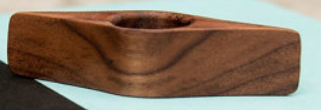
What's it for?
The answer is here.
Or after the jump.
More in extended >>
Posted By: Paul - Mon Jul 01, 2019 -
Comments (2)
Category: Inventions, Chindogu
Superthunderstingcar
Posted By: Paul - Wed May 29, 2019 -
Comments (2)
Category: Evil, Humor, Parody, Inventions, Puppets and Automatons, Television, Science Fiction, 1960s
The Hollister Wind Bag
Patented by Thomas Lloyd Hollister in 1939. He called it a “gas receptor.” Basically, it was a fart collection bag. From the patent:

Posted By: Alex - Sat Mar 30, 2019 -
Comments (1)
Category: Inventions, Patents, Flatulence, 1930s
The Ratapult
Invented circa 1992 by Allen Gross. It was intended to be a more humane rattrap. Instead of killing the rats, it flung them up to 50 feet into a cage or bucket. The dazed, but still living, rodents could then be either turned over to authorities or released into the wild. Noted Gross, “I didn’t want the (rodents) squashed or turned into meatloaf.”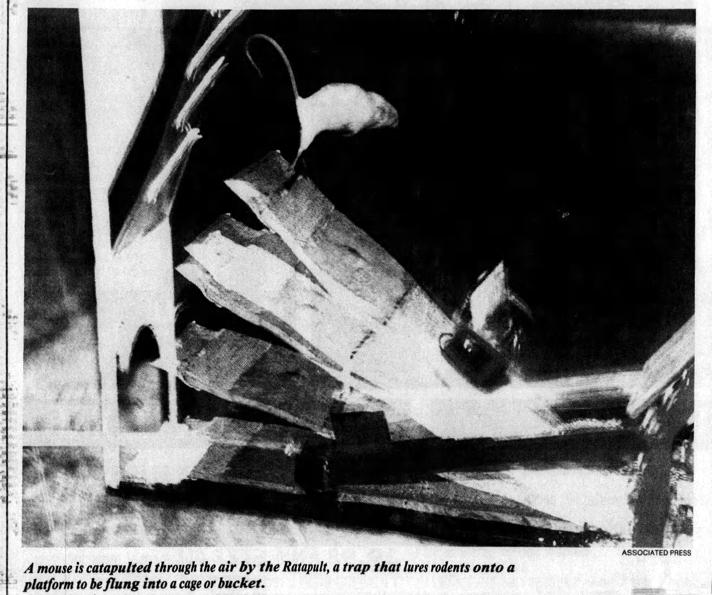
Santa Rosa Press Democrat - Feb 14, 1992
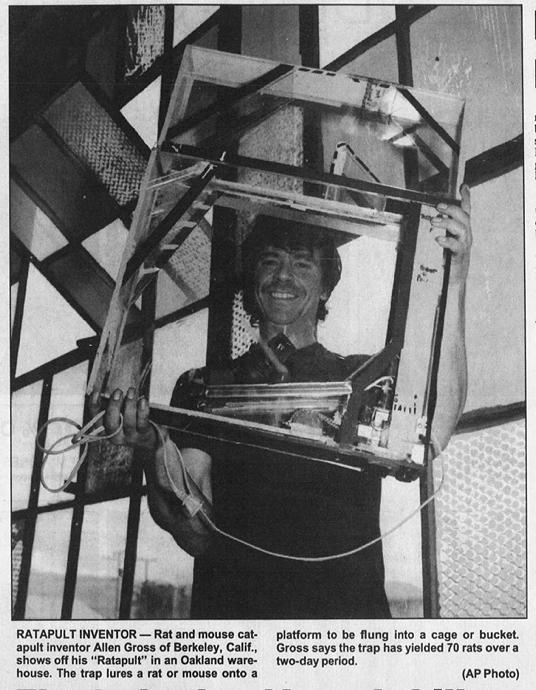
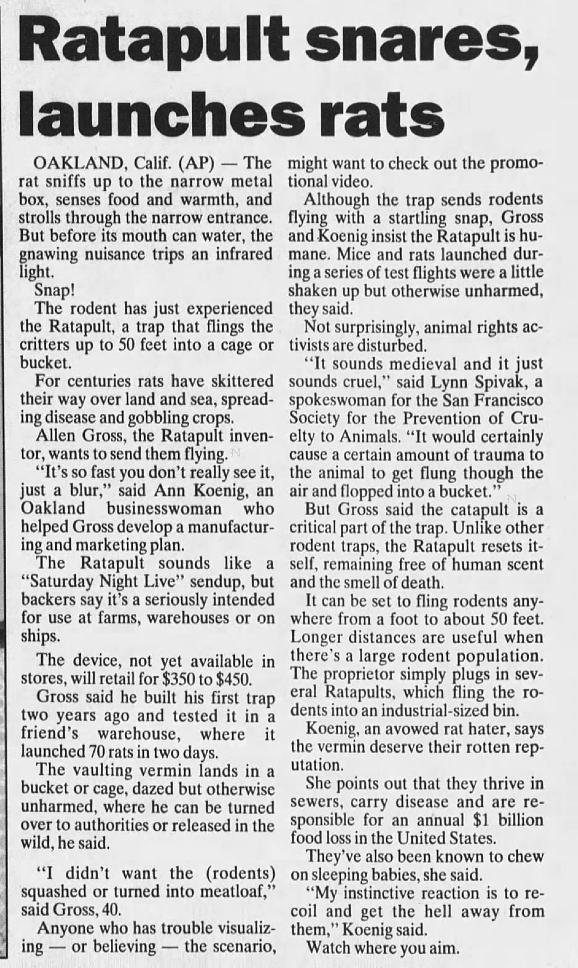
Staunton News Leader - Feb 14, 1992
Turns out this wasn't the first rat-flinging trap to be invented. Back in 1912, a similar device debuted, also called the Ratapult. Though it wasn't intended to be in any way humane:
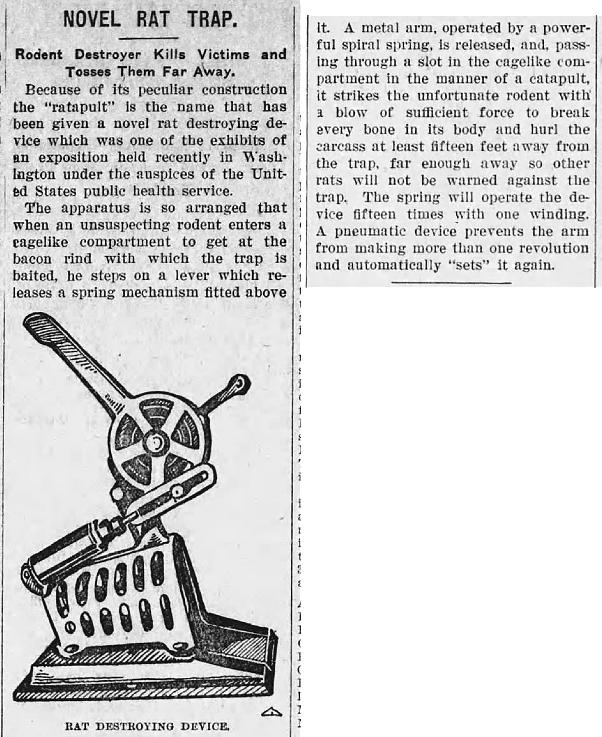
Vergennes Orwell Citizen - Jan 9, 1913
Posted By: Alex - Sat Mar 23, 2019 -
Comments (2)
Category: Inventions, Pests, Plagues and Infestations, 1990s
Prayer-Power Batteries
As explained by what-when-how.com:More info: Aetherius.org, wikipedia

A Prayer Battery being charged. via Aetherius.org.nz
Posted By: Alex - Sun Mar 03, 2019 -
Comments (3)
Category: Inventions, Religion, Technology
Jelly-Strength Tester
Invented in 1932 by C.R. Fellers and J.A. Clague of Massachusetts State College. It's technical name is the Fellers-Clague Penetrometer.As is explained in The Complete Book on Gums and Stabilizers for Food Industry, there are two ways of testing the strength of jelly: 1) "tests in which the elastic limits (breaking strength) of the jellies are exceeded and the jelly is ruptured", or 2) "tests measuring deformation (sag) of jellies without exceeding the elastic limit."
The Fellers-Clague Penetrometer is of the first type.
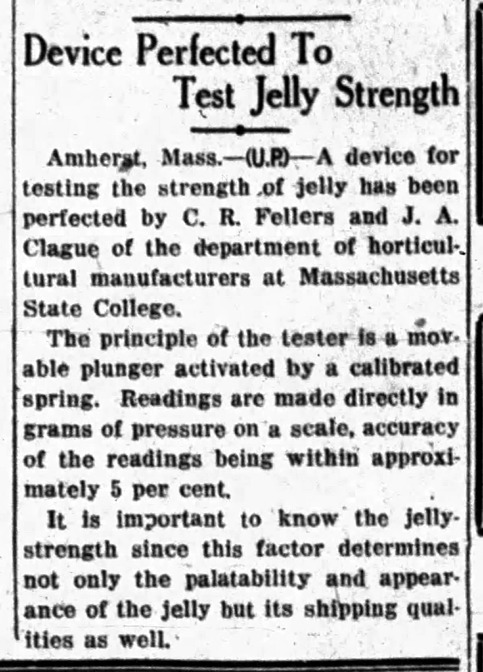
Latrobe Bulletin - July 13, 1932
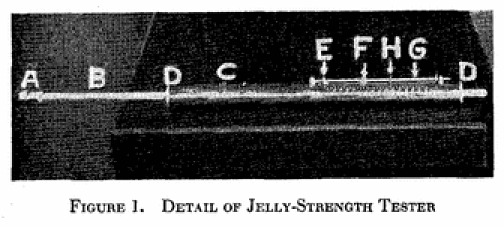
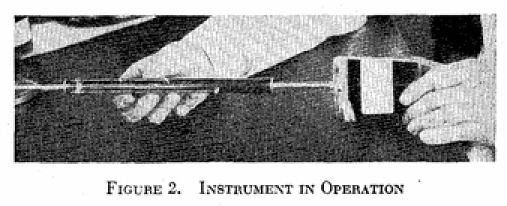
Source: Industrial and Engineering Chemistry, Analytical Edition
Posted By: Alex - Sat Mar 02, 2019 -
Comments (3)
Category: Food, Jello, Inventions, 1930s
Chester Greenwood, Inventor of Earmuffs
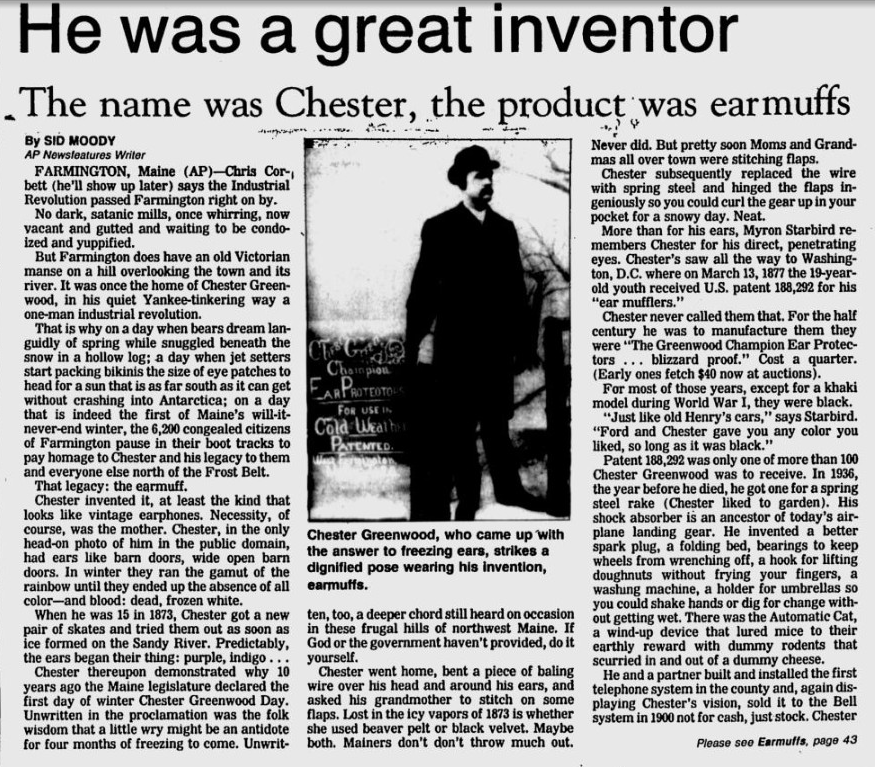
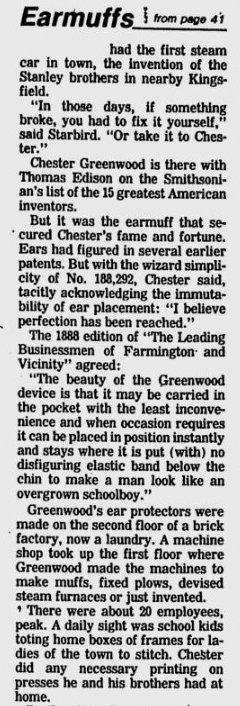
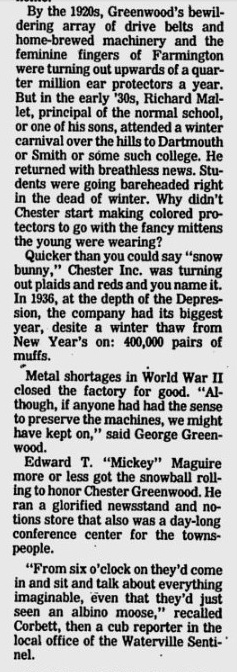

Article source.
Posted By: Paul - Wed Feb 06, 2019 -
Comments (0)
Category: Inventions, Regionalism, Nineteenth Century, Head

| Who We Are |
|---|
| Alex Boese Alex is the creator and curator of the Museum of Hoaxes. He's also the author of various weird, non-fiction, science-themed books such as Elephants on Acid and Psychedelic Apes. Paul Di Filippo Paul has been paid to put weird ideas into fictional form for over thirty years, in his career as a noted science fiction writer. He has recently begun blogging on many curious topics with three fellow writers at The Inferior 4+1. Contact Us |




